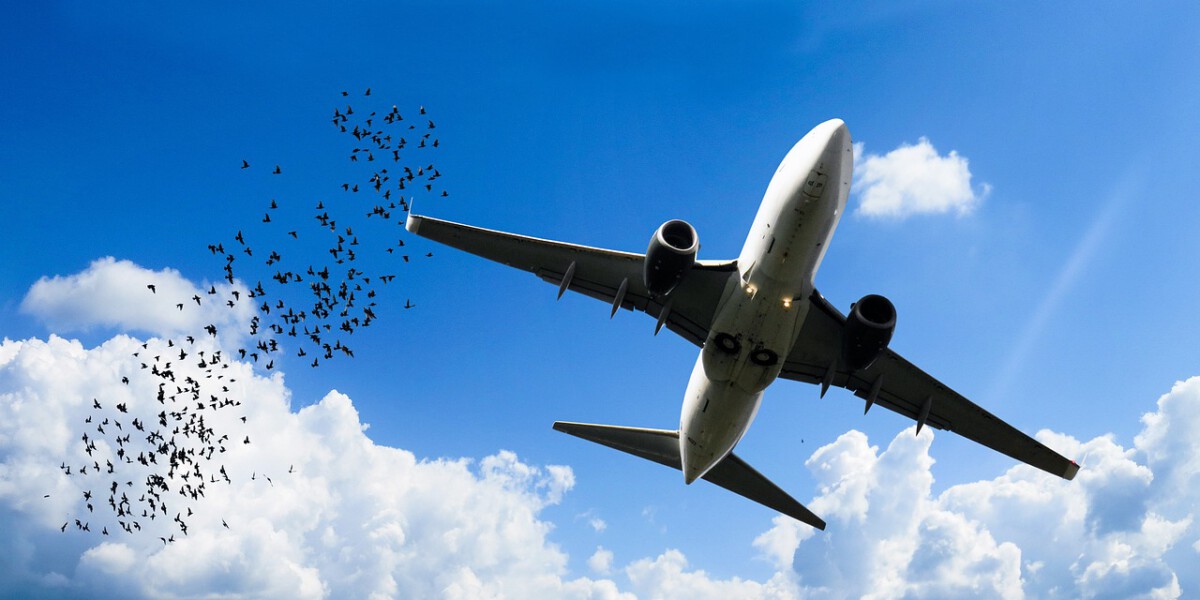When Human Judgment Goes Wrong
Every time you board a plane, your life essentially rests in the hands of another human being – the pilot. That sobering reality becomes even more striking when you learn the numbers: pilot error accounts for 53% of aircraft accidents, with mounting evidence showing that human error causes up to 80 percent of all aviation accidents. We’re not talking about simple mistakes here – these are complex decisions made in high-pressure situations where a split second can mean the difference between safety and catastrophe. Pilot error is the leading cause of crashes involving aircraft, and the majority of aviation accidents stem from a multitude of errors meeting a host of unfavorable conditions. What makes this particularly unnerving is that over 88 percent of all chartered plane crashes are attributed, at least in part, to pilot error, with at least 50 percent of major airline crashes related to human factors. It’s like having someone drive your car while you’re blindfolded – you have to trust their every move.
The Silent Killers in the Sky

Think of an airplane as a symphony orchestra with thousands of instruments that must play in perfect harmony. Planes rely on thousands of highly specialized parts, materials and engineering to make their systems work together, including the powerplant, propeller, induction and ignition systems as well as the fuel, lubrication, cooling, electrical, landing gear and environmental control systems. Just like a single violin out of tune can ruin an entire performance, one part failure due to fatigue, lack of maintenance or a manufacturing defect can lead to a crisis. The numbers are staggering: airplane engines account for over 60% of mechanical incidents, and in 2020, engine malfunctions accounted for over 60 percent of mechanical failure crashes. Mechanical failures may occur due to aircraft defects and negligent maintenance. What’s particularly frightening is that aircraft can be built strictly according to manufacturer specifications and maintained according to required guidelines – and still a devastating crash occurs because of core aircraft design or manufacturing defects.
Mother Nature’s Deadly Surprises

Weather doesn’t discriminate – it can humble even the most experienced pilots. Weather conditions account for 11% of aircraft accidents, but what’s truly shocking is that over 50% of pilots involved in weather accidents held a Commercial or ATP certificate, indicating that weather does not discriminate based on aircraft performance or pilot experience. Picture this: you’re flying through what seems like clear skies when suddenly you’re engulfed in a storm that radar didn’t detect. VFR-into-IMC is the primary threat in weather-related accidents, accounting for over 60% of such incidents. This means pilots who were flying by sight suddenly find themselves in clouds where they can’t see anything – it’s like driving down a highway and suddenly being blindfolded. Planes may encounter rainstorms, snow, fog, high winds, extreme temperatures and slick surfaces, with one of the most common causes being an unintentional shift from VFR into IMC.
The Controllers Who Hold Our Lives
Imagine playing a three-dimensional chess game where every wrong move could kill hundreds of people – that’s what air traffic controllers face every day. Air traffic controllers are constantly coordinating and managing flights within their area of jurisdiction, with many different roles—from evaluating weather conditions and ensuring planes maintain proper distances to advising pilots of upcoming weather conditions or possible flight issues. The pressure is unimaginable, and if a controller makes a mistake, overlooks an important detail or fails to communicate with a pilot, accidents can result. What makes this even scarier is that if an air traffic controller is distracted from his or her duties, is fatigued or poorly trained, any one of those conditions can easily lead to airport runway accidents, or mid-air collision, or faulty services provided to pilots with aircraft emergencies that unnecessarily leads to loss of life. Pilots may deviate from air traffic control instructions, or maintenance crews may move a plane or ground vehicles without permission from traffic control. It’s like having multiple people trying to direct traffic at a busy intersection while blindfolded.
Flying Missiles with Feathers
You might think birds are harmless, but when they meet a plane traveling at hundreds of miles per hour, they become deadly projectiles. A significant threat to flight safety, bird strikes have caused a number of accidents with human casualties, with over 13,000 bird strikes annually in the US alone. The physics are simple and terrifying: when a 4-pound bird meets a plane traveling at 200 mph, it’s like being hit by a cannonball. Bird strikes can happen during takeoff, flight or landing, and common scenarios have involved multiple birds damaging several engines on a craft, encounters with flocks of birds, and single large birds penetrating the windshield or plane panels. Real disasters have happened: in 1995, a Dassault Falcon 20 crashed at Paris–Le Bourget Airport during an emergency landing attempt after sucking lapwings into an engine, which caused an engine failure and a fire in the airplane’s fuselage; all 10 people on board were killed. Even more devastating was when a U.S. Air Force Boeing E-3 Sentry aircraft crashed shortly after takeoff from Elmendorf AFB after losing power in both port side engines when they ingested several Canada geese during takeoff, killing all 24 crew members on board.
The Deadly Dance of Takeoff and Landing

If flying were a performance, takeoff and landing would be the most dangerous acts in the show. The most dangerous times include takeoff and landing and the time periods before and after these events. Think about it: during these phases, planes are closest to the ground, moving at high speeds, and making rapid configuration changes. Landings account for most general aviation accidents but are usually not fatal, however, takeoff accidents are three times less frequent but over 20 times more likely to be fatal. The statistics are chilling: stall/spin incidents lead to the most fatal accidents, but it is worth noting that the takeoff and climb phase sees more stall accidents than descent and approach. Some of the most common pilot errors during takeoff include failure to build up sufficient speed, misuse of instruments, and loss of control, which may occur due to external conditions such as an icy or slippery runway or miscalculation on the part of the pilot. During landing, pilots must closely monitor airspeed, determine when to reduce power and lower the flaps, and adjust for the speed and direction of the wind, with errors in any of these tasks leading to a midair collision with another plane or the aircraft coming up short of the runway.
Maintenance Negligence: The Hidden Killer

What if I told you that the person who last touched your plane might not have been properly trained or might have made a critical error while working on it? Human error can play a part in a crash before the plane is even in the air, and when aircraft maintenance is done incorrectly an aircraft part can malfunction without warning, causing catastrophe. A terrifying example of this happened in 2003: in the crash of Air Midwest Flight 5481 at Charlotte/Douglas International Airport, an inexperienced and unsupervised crew of mechanics mis-rigged the elevator control of a Beechcraft 1900D, thus preventing the pilot from having full capability of lowering the nose if a climb was excessive. The plane became uncontrollable during takeoff. While an aircraft design defect or manufacturing defect can easily lead to a crash, improper maintenance of the aircraft can be just as deadly, and sometimes the plane or helicopter and all of its components are well-crafted and free of defect, but due to faulty maintenance the plane or parts fail to work as expected. What’s even more concerning is that a recent trend in outsourcing and hiring low-cost aircraft maintenance providers who may not necessarily be properly trained or experienced in servicing certain types of aircraft has made aircraft maintenance negligence a very real safety issue that has contributed to multiple accidents.
Manufacturing Nightmares

Imagine discovering that the plane you’re flying in has a fundamental design flaw that makes it prone to catastrophic failure. This isn’t science fiction – it’s a reality that has claimed lives. It is the responsibility of an aircraft manufacturer – and the maker of each and every aircraft part – to ensure that an airplane is made without any design or manufacturing defects, and the manufacturer is responsible for aircraft manufacturing or design defects if the defect causes harm to others. The scary truth is that errors in designing the aircraft, the manufacturing of its parts, and the assembly of the craft can result in structural weaknesses and decreased performance, and left unchecked, these problems can increase the risk of accidents affecting multiple units in a family of aircraft. Technical defects can occur for a variety of reasons, including wear and tear, poor maintenance or manufacturing defects. One of the most extreme consequences is uncontrolled decompression, where the loss of pressure can limit the oxygen in the cabin, potentially resulting in brain injury and loss of consciousness, and if the flight crew is rendered unconscious, the aircraft may crash.
Runway Chaos: Ground-Level Disasters

You might think once a plane is safely on the ground, the danger is over – but you’d be wrong. The Federal Aviation Administration defines runway incursions as “any occurrence at an aerodrome involving the incorrect presence of an aircraft, vehicle, or person on the protected area of a surface designated for the landing and takeoff of aircraft”. Picture this: you’re landing and suddenly there’s another plane on your runway, or a maintenance vehicle that shouldn’t be there. The numbers fluctuate wildly: in 2023, 23 runway incursions were labeled as serious incidents, more than at any other point over the past decade, but the number of serious runway incursions fell to just seven in 2024, the fewest number in the previous decade. Poor signage on aircraft or lighting issues can also play a role. What makes this particularly dangerous is that these incidents happen when aircraft are moving at high speeds and have limited ability to maneuver or stop quickly.
The Fog of War: Communication Breakdowns
In aviation, a misunderstood word or missed radio call can mean the difference between life and death. Communication failures have led to some of the most devastating accidents in aviation history. The Tenerife airport disaster on March 27, 1977, remains the accident with the highest number of airliner passenger fatalities, where 583 people died when a KLM Boeing 747 attempted to take off and collided with a taxiing Pan Am 747, with pilot error being the primary cause as the KLM captain mistakenly believed he had received air traffic control clearance and initiated takeoff, with contributing factors including dense fog, poor radio phraseology, and controller distraction. Think about it: two massive jets colliding because of miscommunication – it’s like two freight trains meeting head-on because someone misread a signal. Miscommunication with air traffic control may also result in collisions on the runway as the plane lands. Cultural factors can make this worse: in Korean culture, it is mandatory to show high respect for someone in authority, and the first officer noticed things weren’t going as planned, but out of respect for the captain, he hesitated to speak up, sadly leading to Korean Air Flight 801 aircraft crashing into a hillside.
Terrorism and Sabotage: Deliberate Destruction

Sometimes planes don’t crash due to accidents – they’re brought down by people with malicious intent. Commercial passenger airliners and cargo aircraft have been the subject of plots or attacks by bombs and fire since near the start of air travel, with many early bombings being suicides or schemes for insurance money, but in the latter part of the 20th century, assassination and political and religious militant terrorism became the dominant motive for attacking large jets, with one list describing 86 cases related to airliner bombings, 53 of them resulting in deaths. The most devastating example was the 2001 September 11 attacks where the largest loss of life overall in a collective incident was the 2,996 fatalities in the coordinated terrorist destruction of airplanes and occupied buildings, with four commercial jet airliners being hijacked by 19 Islamist terrorists affiliated with Al-Qaeda and crashed in coordinated suicide attacks. Of 55 hijackings or attempted hijackings during one studied period, 10 were terminated or aborted by security forces, and 45 were successful, with pistols and grenades being the weapons most often used. What’s chilling is that technical defects are not considered exceptional circumstances by courts unless they are due to unforeseeable events such as sabotage or terrorist attacks.
The Fatigue Factor: When Exhaustion Kills

Imagine being responsible for hundreds of lives while fighting to keep your eyes open. Pilot fatigue is a hidden killer that doesn’t get the attention it deserves. Fatigue, stress and distractions also play a role in pilot error. The consequences can be deadly: the NTSB said pilot fatigue was a possible factor in the Korean Air Flight 801 crash. Just like with the previous flight, the pilot was struggling with acute fatigue, which compromised his decision-making abilities. This creates a terrifying scenario where the person controlling your aircraft might be as impaired as a drunk driver. Unfortunately, many airlines place pressures on their pilots and crew that increase the likelihood of human error, with airline corporate negligence often leading to improperly trained or fatigued pilots flying planes, thus putting passengers’ lives at risk. Think about it: would you want a surgeon operating on you after being awake for 20 hours? Yet pilots are sometimes expected to make life-or-death decisions in similar conditions. Loss of situational awareness occurs when dealing with one emergency issue aboard an aircraft and it’s easy to forget to maintain awareness of other potential issues, such as the 1978 United Airlines Flight 173 Portland, Oregon crash that occurred when the crew was so distracted while attempting to diagnose an issue with the landing gear that they failed to realize they were running out of fuel.
Staring at these reasons why airplanes crash is like looking into an abyss of human vulnerability and mechanical complexity. Every flight is essentially a victory over dozens of potential failure points, from the fallible humans in the cockpit to the thousands of parts that must work perfectly together. For all the unsettling headlines, the numbers still point to a simple truth: Flying remains exceptionally safe — especially compared to the risks Americans take every day traveling on the ground. Yet knowing these dangers exist makes every safe landing feel like a small miracle. What would you guess is the most likely cause if your plane were to crash tomorrow?





